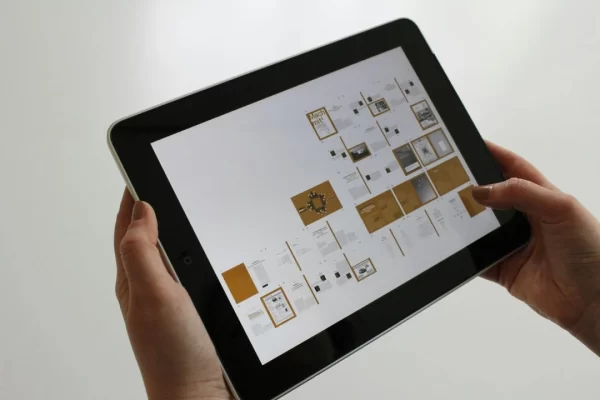When creating a new website, several factors must be considered to ensure its success. While aesthetics and content are important, usability plays a crucial role in keeping visitors engaged and helping them achieve their goals efficiently. This is where usability testing for websites becomes essential.
In this article, we’ll explore the fundamentals of usability, the importance of usability testing, different usability testing methods, and what happens after conducting a usability test.
What is Usability?
Usability refers to how easy and efficient it is for users to navigate and interact with a product, whether it’s a website, application, or device. A website with good usability ensures that users can quickly accomplish their tasks without frustration.
Key Components of Usability
- Learnability – How easy is it for new users to complete tasks on the website?
- Memorability – Can returning users easily recall how to navigate the site?
- Efficiency – How fast can users complete tasks once they are familiar with the website?
- Satisfaction – Do users enjoy the experience of using the website?
- Error Handling – How many errors do users encounter, and how easily can they recover from them?
Why is Usability Important for Websites?
If a website is difficult to navigate, visitors will likely leave and seek an alternative. Usability directly impacts user satisfaction, engagement, and conversions. Here are some reasons why usability is critical for websites:
Better User Experience
A well-designed, user-friendly website keeps visitors engaged and encourages them to return.
Higher Conversions
If users can navigate your site effortlessly, they are more likely to complete desired actions, such as making a purchase or filling out a form.
Competitive Advantage
A website with better usability than its competitors will attract and retain more customers.
Reduced Bounce Rate
Users are less likely to leave your website if they find it intuitive and easy to use.
What is Usability Testing?
Usability testing is a process where real users interact with a website to identify issues and areas for improvement. It helps businesses understand how intuitive and user-friendly their website is.
Main Types of Usability Testing
- Explorative Testing – Conducted during the early stages of development to assess initial usability concepts.
- Assessment Testing – Evaluates usability at a mid-development stage to refine the website before launch.
- Comparative Testing – Compares two or more website designs to determine which performs better.
Types of Usability Testing Methods
1. Hallway Testing
This method involves testing a website with random people who have no prior experience with it. It helps identify usability problems early in development.
2. Remote Usability Testing
This approach involves testing the website with users from different locations. It allows real-world testing in a user’s natural environment and can be conducted via video conferencing or usability testing software.
3. Expert Review
A usability expert evaluates the website, identifying potential usability issues based on industry best practices and prior experience.
4. Paper Prototype Testing
Before coding begins, hand-drawn or digital mockups of the website are tested with users. This low-cost method helps refine the design before significant resources are invested.
5. Questionnaires and Interviews
Surveys and one-on-one interviews collect feedback from users about their experience with the website. While surveys gather structured data, interviews allow for in-depth insights.
6. Do-It-Yourself Walkthrough
The website creator walks through common user scenarios, mimicking the user journey to identify possible obstacles.
7. Controlled Experiments
Similar to scientific experiments, controlled usability tests compare different versions of a website under the same conditions to determine which performs better.
8. Automated Usability Evaluation
Automated tools analyze usability factors such as navigation, accessibility, and responsiveness, providing data-driven insights for improvement.
What Happens After Website Usability Testing?
Once usability testing is complete, the next steps involve:
1. Analyzing Data
Identify patterns in user feedback and note any recurring issues.
2. Prioritizing Fixes
Address the most critical usability problems first.
3. Making Iterative Improvements
Implement changes and continuously test them to enhance usability.
4. Ongoing Testing
Usability testing should be a continuous process, especially after significant website updates.
FAQs About Usability Testing for Websites
1. How often should usability testing be done?
Usability testing should be conducted at different stages of development and whenever major updates or redesigns are made to the website.
2. What tools can be used for usability testing?
Some popular usability testing tools include Hotjar, Crazy Egg, UserTesting, and Google Analytics.
3. Can usability testing be done on a live website?
Yes, usability testing can be conducted on live websites through remote testing, A/B testing, and user surveys.
4. What is the difference between usability testing and user testing?
Usability testing focuses on how easy it is for users to interact with a website, while user testing assesses user needs, preferences, and behaviors.
5. Does usability testing improve SEO?
Yes! A user-friendly website enhances engagement, reduces bounce rates, and improves search engine rankings.
Get Started with Digital Rescue Today!
Using real users to test a website, app, or other product and observing their actions and reactions is the core of usability testing. Usability testing is necessary to ensure that you create an experience that is both effective, efficient, and enjoyable for your users.
You can start by watching session recordings or rent a lab with eye-tracking equipment to do the job more thoroughly.
However, if you don’t have the time and knowledge regarding this matter, the easiest way to get started is by seeking help from web design professionals like Digital Rescue.
Observing how visitors navigate your website with the help of our web experts can help you create the best user experience possible.
Beautiful design, the skill of a web design agency, smart SEO, and clever copywriting are all necessary for online success. Thankfully, we do everything.
With the combination of leading SEO from our partner company TopRankings and more than 20 years of digital strategy expertise, Digital Rescue accomplishes what few others cannot.
The outcome? A stunning website designed to generate leads. Contact us now to book a free chemistry call!



